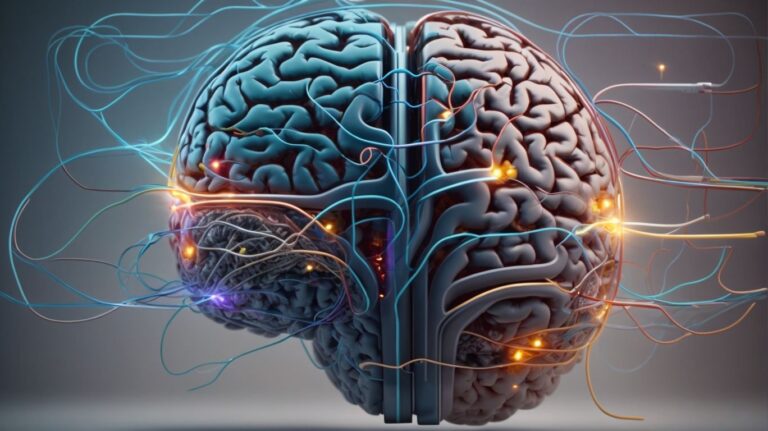Have you ever wondered why we dream or what happens during REM sleep? In this article, we will delve into the intriguing world of Rapid Eye Movement (REM) sleep in psychology.
We will explore the characteristics, functions, and theories surrounding REM sleep, as well as the effects of REM sleep deprivation. We will discuss how REM sleep is measured, factors that can affect it, common disorders related to REM sleep, and tips on improving the quality of REM sleep.
So, grab a cup of tea and let’s unravel the mysteries of REM sleep together!
Contents
- 1 What Is REM Sleep?
- 2 How Does REM Sleep Differ From Other Stages of Sleep?
- 3 What Are the Functions of REM Sleep?
- 4 What Are the Effects of REM Sleep Deprivation?
- 5 How Is REM Sleep Measured?
- 6 What Factors Can Affect REM Sleep?
- 7 What Are the Common Disorders Related to REM Sleep?
- 8 How Can Someone Improve Their REM Sleep?
- 9 Frequently Asked Questions
- 9.1 What is REM sleep and why is it important in psychology?
- 9.2 How does REM sleep differ from other stages of sleep?
- 9.3 What happens if a person does not get enough REM sleep?
- 9.4 Can REM sleep be affected by external factors?
- 9.5 How can someone improve their REM sleep?
- 9.6 Is REM sleep the only stage of sleep that includes dreaming?
What Is REM Sleep?
REM sleep, short for rapid eye movement sleep, is a crucial stage in the sleep cycle characterized by heightened brain activity, muscle relaxation, and rapid eye movements.
During REM sleep, the brain is highly active, almost akin to the wakeful state, with vivid dreams often occurring. This phase is essential for cognitive functioning, memory consolidation, and emotional processing. Notably, the body experiences temporary muscle paralysis to prevent individuals from physically acting out dreams, a phenomenon known as atonia. The eyes move rapidly behind closed eyelids. These distinctive features of REM sleep contribute significantly to overall sleep quality and restoration. Understanding and optimizing REM sleep is vital for maintaining optimal mental and physical well-being.
How Does REM Sleep Differ From Other Stages of Sleep?
REM sleep differs significantly from other stages of sleep due to its association with vivid dreaming, brain development, and unique physiological responses.
What Are the Characteristics of REM Sleep?
The characteristics of REM sleep include distinct brain wave patterns, rapid eye movements, and potential associations with various sleep disorders.
During REM sleep, the brain exhibits a pattern of high-frequency, low-amplitude waves that are similar to waking brain activity. This stage is also known for the vivid and rapid movements of the eyes under closed eyelids, contrasting with the lack of eye movement in other sleep stages. These combined characteristics make REM sleep a unique and easily identifiable phase of the sleep cycle. The presence of REM sleep is crucial for maintaining proper cognitive function and emotional regulation, with disruptions in this stage linked to conditions like insomnia and narcolepsy.
What Are the Functions of REM Sleep?
REM sleep serves essential functions in memory consolidation, emotional processing, and ongoing research into its impact on cognitive processes.
What Are the Theories About the Purpose of REM Sleep?
Several theories aim to explain the purpose of REM sleep, including the threat rehearsal theory, insights into brain chemistry, and the involvement of neurons in this sleep stage.
One prevalent theory suggests that REM sleep serves as a mechanism for threat rehearsal, where the brain simulates and processes potentially dangerous situations. This practice enables an individual to mentally prepare for challenging scenarios, enhancing survival instincts and adaptation abilities.
The intricate dance of brain chemistry in REM sleep involves neurotransmitters like acetylcholine and serotonin, regulating mood, memory consolidation, and overall cognitive processes. Neuronal activity during REM sleep showcases heightened connectivity between different brain regions, facilitating memory integration and emotional regulation.
What Are the Effects of REM Sleep Deprivation?
REM sleep deprivation can have profound effects on health, learning abilities, and memory consolidation processes.
When the body is deprived of REM sleep, it disrupts the natural cycle of restorative processes crucial for proper functioning. This lack of this specific type of sleep can lead to an increase in stress levels, weakened immune system, and heightened risk of developing chronic conditions like diabetes and heart diseases.
Inadequate REM sleep can significantly impact learning capacity and memory functions. During REM sleep, the brain consolidates and organizes memories, helping individuals retain information and improve cognitive abilities. When this process is compromised, it can result in difficulties with concentration, problem-solving skills, and overall cognitive performance.
How Is REM Sleep Measured?
REM sleep is commonly measured through EEG patterns, biochemical markers, and specific neurotransmitters such as acetylcholine.
EEG patterns are one of the primary methods used to assess REM sleep, as they reflect the brain’s electrical activity during this stage of sleep. By analyzing the characteristic brain wave patterns observed during REM sleep, researchers can identify the different stages and depth of this important sleep cycle. In addition, biochemical markers play a crucial role in measuring REM sleep, providing insights into the metabolic processes and changes that occur in the body during this phase.
Neurotransmitters like acetylcholine are key players in regulating REM sleep, with their levels and activity influencing the onset, duration, and quality of this restorative period. Acetylcholine’s interaction with other neurotransmitters and brain structures helps orchestrate the complex processes involved in the REM stage, making it an essential component of sleep assessment and research.
What Factors Can Affect REM Sleep?
Various factors can influence REM sleep, including serotonin levels, disruptions in the sleep cycle, and the presence of sleep disorders.
How Does Age Affect REM Sleep?
Age can have a significant impact on REM sleep patterns, with variations observed across different life stages and potential implications for conditions like REM-related bradyarrhythmia syndrome.
During infancy and childhood, REM sleep comprises a substantial portion of the sleep cycle, aiding in brain development and memory consolidation. As individuals age, the amount of REM sleep decreases, often accompanied by shifts in sleep architecture. Exploring REM Sleep in Psychology
Adolescents often experience delayed REM onset due to hormonal changes, whereas older adults may face fragmented REM sleep. In conditions like REM-related bradyarrhythmia syndrome, irregularities in heart rhythm during REM stages can disrupt the overall sleep quality, leading to cardiovascular issues.
Understanding these correlations between age, REM sleep, and health outcomes is crucial for comprehensive sleep management.
What Role Does Stress Play in REM Sleep?
Stress can significantly impact REM sleep, and research by Ionnanis Tsoukalas from Stockholm University suggests a link between stress levels and orexin/hypocretin activity during this sleep stage.
When an individual experiences stress, it triggers a cascade of physiological responses that can disrupt the delicate balance of neurotransmitters and neuropeptides involved in regulating REM sleep. Tsoukalas’ findings highlight the intricate interplay between stress-induced changes in orexin/hypocretin signaling, leading to alterations in REM sleep architecture and duration.
The dysregulation of these crucial neurochemical systems can have far-reaching implications for overall sleep quality and cognitive function, potentially exacerbating the negative effects of stress on mental well-being.
What Are the Common Disorders Related to REM Sleep?
Several common disorders are associated with REM sleep, including REM Sleep Behavior Disorder and Narcolepsy, impacting the quality and regulation of REM sleep cycles.
What Is REM Sleep Behavior Disorder?
REM Sleep Behavior Disorder is a neurological condition characterized by abnormal behavior during REM sleep, requiring specific diagnosis, treatment, and management of symptoms.
During REM sleep, the body undergoes muscle paralysis to prevent acting out dreams, but individuals with REM Sleep Behavior Disorder experience movements, vocalizations, or even physically acting out their dreams. Symptoms may include shouting, flailing limbs, or punching.
Diagnosis often involves sleep studies to monitor brain activity and muscle movements during sleep. Treatment options vary, including lifestyle changes, medication, and behavioral therapy. It’s crucial for individuals with this disorder to consult a healthcare professional for proper evaluation and management to improve sleep quality and prevent potential injuries.
What Is Narcolepsy?
Narcolepsy is a chronic sleep disorder associated with excessive daytime sleepiness, often linked to conditions like sleep apnea, and managed through interventions as per the Substance Abuse and Mental Health Services Administration guidelines.
Individuals with narcolepsy may experience sudden and uncontrollable bouts of sleep during the day, disrupting their normal activities. These unexpected sleep attacks can be dangerous, especially if they occur while driving or operating heavy machinery. Along with excessive daytime sleepiness, common symptoms of narcolepsy include sleep paralysis, hallucinations, and fragmented nighttime sleep.
Research suggests a potential connection between narcolepsy and conditions like sleep apnea, which further emphasizes the importance of proper diagnosis and treatment. The National Sleep Foundation recommends a multi-faceted approach to managing narcolepsy, including lifestyle modifications, medication, and cognitive behavioral therapy.
What Is Sleep Paralysis?
Sleep paralysis is a neurological condition characterized by temporary muscle immobility, often accompanied by vivid hallucinations and frequently associated with various sleep disorders.
During sleep paralysis, individuals may experience a sense of fear or impending doom, as well as a feeling of pressure on the chest. These episodes typically occur during the transition between wakefulness and sleep, with the affected person being fully conscious but unable to move or speak. Hallucinations during sleep paralysis can vary from visual, auditory, to tactile sensations, creating a surreal and often terrifying experience for the individual. Some people may also report a sensation of being watched or a presence in the room. To learn more about the phenomenon of sleep paralysis, you can explore Exploring REM Sleep in Psychology.
How Can Someone Improve Their REM Sleep?
Improving REM sleep involves adopting healthy sleep hygiene practices, making lifestyle modifications, and incorporating relaxation techniques to enhance the quality and duration of REM sleep cycles.
One effective strategy for enhancing REM sleep quality is to establish a consistent sleep schedule by going to bed and waking up at the same time each day. This helps regulate your body’s internal clock, promoting a more stable sleep-wake cycle. Creating a relaxing bedtime routine that signals to your body it’s time to wind down can improve your ability to fall and stay asleep. This can include activities like reading a book, taking a warm bath, or practicing deep breathing exercises.
Frequently Asked Questions
What is REM sleep and why is it important in psychology?
REM sleep, or rapid eye movement sleep, is a stage of sleep characterized by rapid eye movements and increased brain activity. It is important in psychology because it is believed to play a role in memory consolidation, emotion regulation, and dreaming.
How does REM sleep differ from other stages of sleep?
REM sleep is distinct from other stages of sleep because it is associated with dreaming, increased brain activity, and paralysis of the muscles. In contrast, non-REM sleep is characterized by slower brain activity and physical relaxation.
What happens if a person does not get enough REM sleep?
If a person does not get enough REM sleep, they may experience difficulties with memory, mood, and overall cognitive functioning. Chronic deprivation of REM sleep has also been linked to mental health issues such as depression and anxiety.
Can REM sleep be affected by external factors?
Yes, external factors such as stress, medications, and substance use can disrupt REM sleep. Additionally, certain sleep disorders, such as narcolepsy and sleep apnea, can also impact the quality and duration of REM sleep.
How can someone improve their REM sleep?
To improve REM sleep, it is important to maintain a consistent sleep schedule, create a comfortable sleep environment, and practice relaxation techniques before bedtime. Avoiding caffeine and heavy meals close to bedtime can also help promote better REM sleep.
Is REM sleep the only stage of sleep that includes dreaming?
No, dreams can occur in both REM sleep and non-REM sleep. However, dreams during REM sleep are typically more vivid and bizarre, while dreams during non-REM sleep tend to be more mundane and less memorable.



